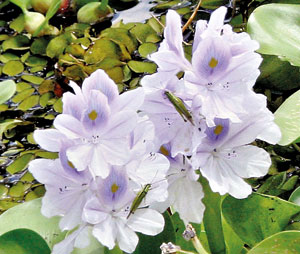"Every flower has a story," Arittha Wikramanayake tells me. Each of his histories is a lovely blend of myth and science; recipes for traditional cures and key components in modern medicines.
 |
| Arittha Wikramanayake |
There's even the odd scurrilous rumour thrown in. Sudu Purak (Justician betonica) notes Arittha, is used in Sri Lanka as a poultice for boils and as a cure for snakebites in Kenya. Daluk (Euphorbia antiquorum) is sacred to Mansa, the goddess of serpents. Hindus in parts of India worship it on Tuesdays and Thursdays, praying for protection from her reptilian subjects.
The sweet-smelling Angel's Trumpet (Brugmansia suaveolens) has a dark alter ego - in India and Russia it was used to make knock-out drops that thieves and prostitutes would employ to make their victims unconscious. Some of the plants in the family Solanaceae have hallucogenic properties which may have inspired implausible stories of flying witches, while Virgil claimed that the flavour of honey would be improved if asters were boiled in wine and placed near a beehive.
These are some of the stories that find their way into his new book 'Wild Flowers of Sri Lanka'.
"There are two types of people who study wild flowers - botanists and photographers," Arittha says. The former's passion he believes is primarily scientific in nature, the latter see only the aesthetic beauty of their delicate subjects. However, Arittha, the author of this hefty new book is neither a botanist nor a professional photographer. In fact, he might be the last person you'd expect to find gathering blooms in some rural field. As a Senior Partner of a prominent Colombo law firm, he is a leading corporate and financial lawyer, one who has been frequently invited to comment on corporate governance issues. But among his many talents is a gift for spotting wild flowers.
He sees them wherever he goes - blooming on the side of Galle Road, buried in a thicket in the Sinharaja rainforest or in a field close to Jaffna. "I've trained my eyes," he says, explaining that he often spots likely specimens even while zipping by in a car. He rarely misses an opportunity to take a picture and a cutting because though it's been seven years in the making, this is a book he's long wanted to publish. It follows very naturally on his first, a collaboration with his daughter Ariesha, titled 'Butterflies of Sri Lanka'.
That book had few predecessors and was remarkable in that it had been put together by amateur lepidopterists. They succeeded in cataloguing (without in any way harming their subjects) 170 out of a known 190 kinds of Sri Lankan butterflies. Along the way, they ended up taking many photographs of wild flowers and eventually when the butterfly book was complete, a field guide to wild flowers in Sri Lanka seemed a worthwhile undertaking.
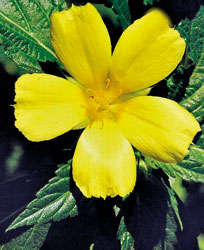 |
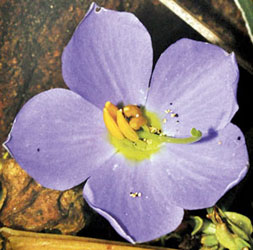 |
| Holy Rose |
Binasa |
|
| Japan Jabara |
With Ariesha grown up and having left to pursue her studies abroad, Arittha has done most of the work on the manuscript himself. He says he's made a ritual of cutting off work at 7:30 p.m. and turning to his project of the moment. He confesses that it has been time consuming, back breaking work; in particular, because of an interesting approach he's chosen to employ in describing the plants.
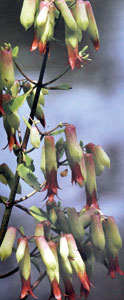 |
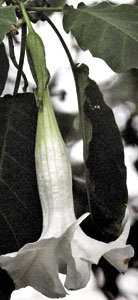 |
| Akka pana |
Angel's Trumpet |
Desiring to make the process of identification easier for his reader, he has scanned specimens of every plant he's photographed. The scans are quite strikingly beautiful on their own - delicate and lovely, the shape of leaf and stem clearly outlined. Matching each plant to its botanical name has also been a time consuming process, he says.
Poring over local books on the subject, scouring the internet and shooting off numerous letters (some to experts in the Smithsonian and Royal Botanic Gardens, Kew) he managed to name 384 of his finds. Many unfortunately remain anonymous and have been left out.
Arittha has adopted a simple criteria to determine which of the identified flowers did make it into the book - some are endemic (growing only in Sri Lanka), others indigenous (that are native to Sri Lanka but might grow elsewhere in the world) while the remaining are naturalised, having travelled to the island at some point in its history. None of these however, were photographed in gardens. Shunning the 'exotics' Arittha only included those flowers he found blooming in the wild.
This week, with beautiful copies of the book now arriving fresh off the presses from Singapore, Arittha confesses to being a little bored already. He's already looking around for a new subject - perhaps it will be spiders, he says or perhaps trees. Whatever the project, he says his philosophy remains the same - "To do something new and to do it well."
Priced at Rs. 8,000, the book can be ordered by calling 0777340369. |




